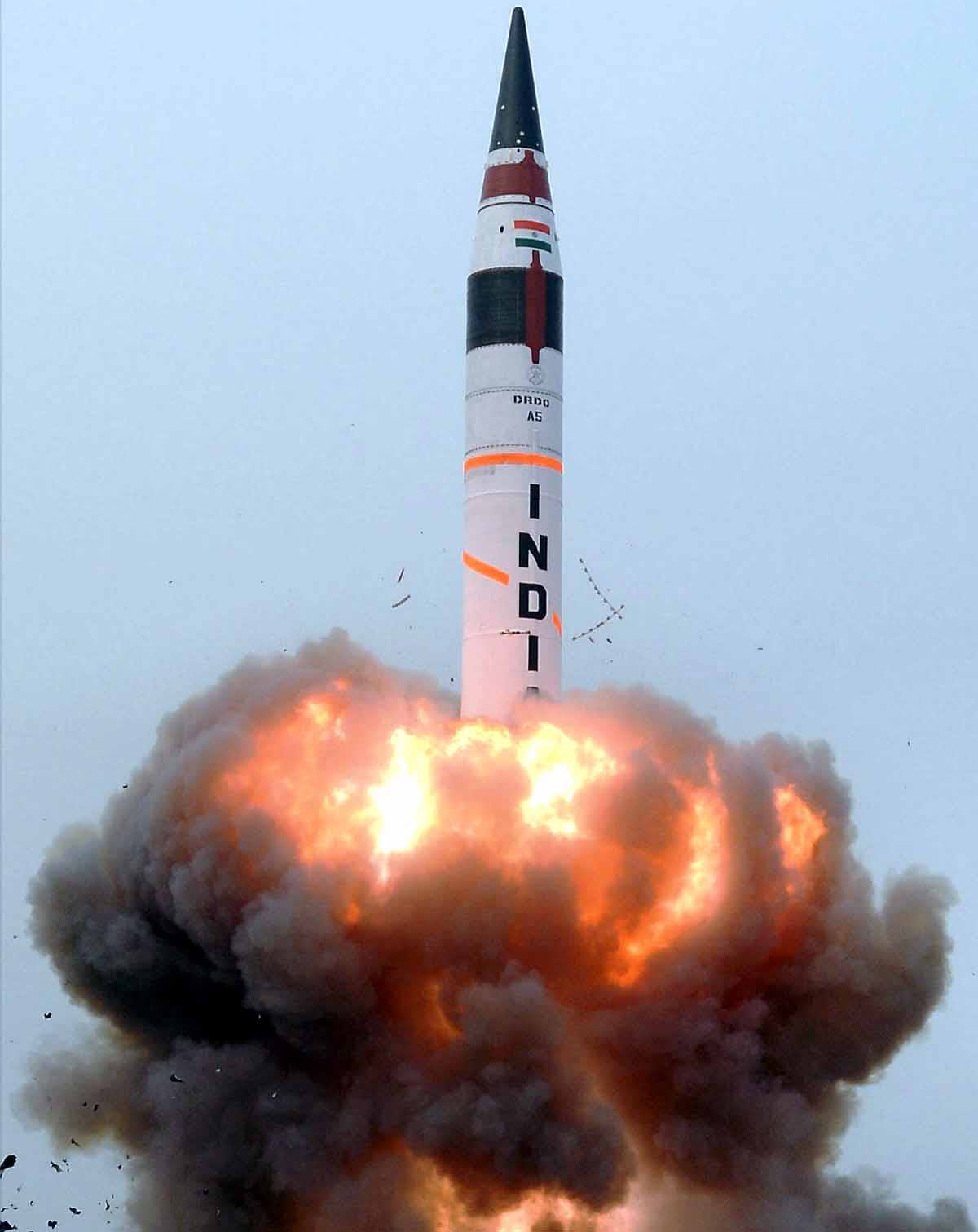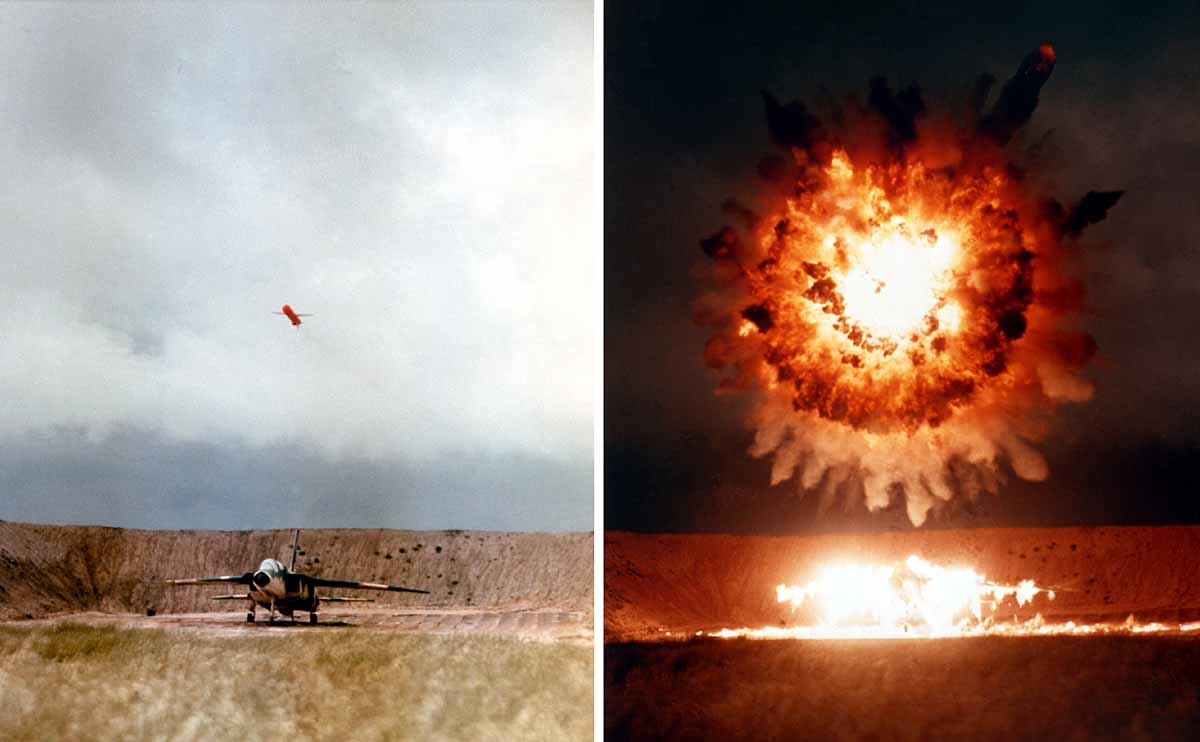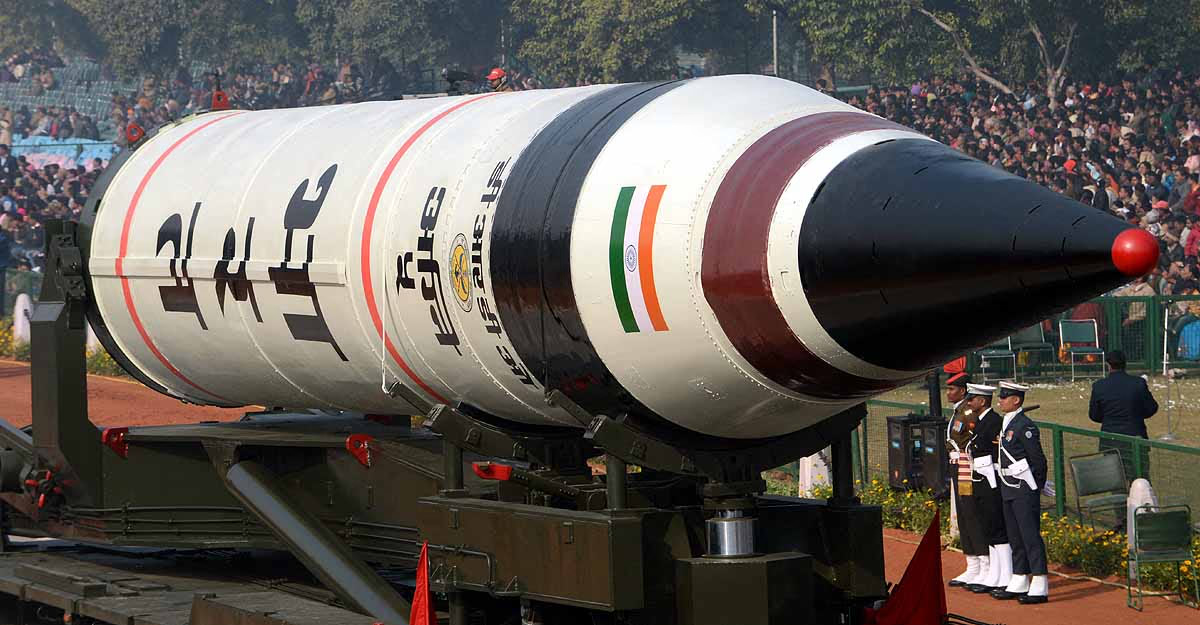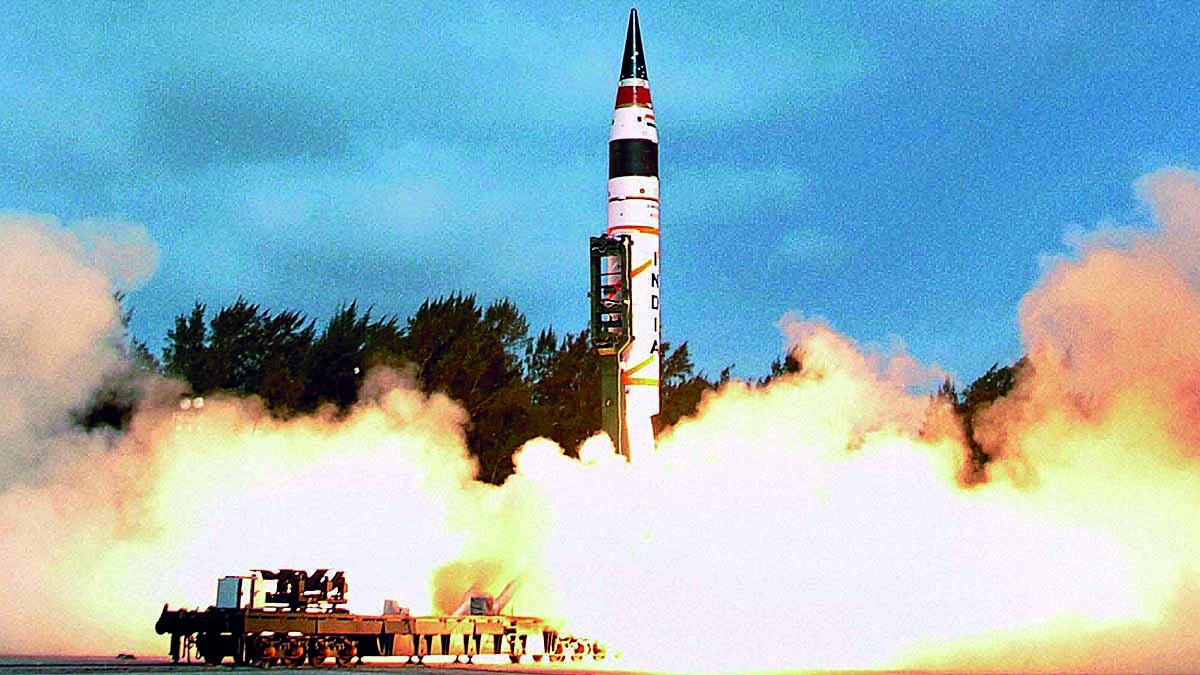To bolster its defense prowess, India has embarked on the development of a new conventional (non-nuclear) variant of the Agni-V missile. This formidable missile will be equipped with a massive 7.5-ton warhead and a range capped at 2000-2500 km.
Two types of warheads are being developed for this missile: the airburst warhead, designed to decimate large swathes of ground infrastructure, and the bunker-buster warhead, aimed at targeting heavily fortified underground bases, penetrating depths of 80-100 meters. This development elevates India's strategic capabilities significantly, specifically impacting neighboring regions such as Pakistan and China.

Source: aajtak
What's Special about the New Agni-V Version?
The Agni-V stands as India's most advanced Intercontinental Ballistic Missile (ICBM), meticulously developed by the DRDO. The current variant can deploy nuclear warheads and reaches beyond 7,000 kilometers, enabling it to target regions as far as China, Pakistan, and even parts of Europe.
Recent reports indicate that India is crafting a non-nuclear version of Agni-V, armed with a hefty 7.5-ton warhead. Key features of this new version include...
1. Types of Warheads
Airburst Warhead:
This warhead explodes mid-air, wreaking havoc across expansive sites such as airports, radar stations, and military installations. It's highly effective for neutralizing airfields, destroying aircraft, and devastating extensive military facilities, compromising enemy force in swift blows.

Source: aajtak
Bunker-Buster Warhead:
Specially designed to obliterate underground posts buried 80-100 meters deep, this warhead can breach nuclear arsenals, command hubs, and other critical subterranean facilities, making it an immensely efficient penetrator of hard concrete and steel structures.
2. Range and Technology
The range of this new version will be limited to 2000-2500 kilometers, a decrease from the existing Agni-V's 7000 km range, attributable to the increased payload weight of the 7.5-ton warhead.
Launch System: It employs a canister-launch system, allowing for ease of transport and deployment via road or rail, making it launch-ready in any terrain and under all weather conditions.
Navigation: Equipped with ring laser gyroscope and NavIC/GPS-based navigation systems, it offers precision targeting with a Circular Error Probable (CEP) of less than 10 meters, ensuring lethal efficacy.
Materials: Constructed using light composite materials, reducing its weight by 20%, aiding in range extension.
Speed: Capable of reaching speeds of Mach 24 (approximately 29,400 km/hour), placing it among the fastest missiles globally.
3. Development Status
The missile is currently in its preliminary development phase. The DRDO has initiated design and engineering efforts, with the first test yet to be conducted. The successful demonstration of the Agni-V's Multiple Independently Targetable Re-entry Vehicle (MIRV) variant during Mission Divyastr (March 2024) affirmed India's technological acumen. This advancement could benefit the conventional variant as well.

Source: aajtak
Impact on Regional Countries
This new version of Agni-V will instigate a transformative evolution in India's military strategy, significantly impacting regional neighbors, notably Pakistan and China.
1. Pakistan
Range and Target:
With a span of 2000-2500 km, this missile can encompass the entirety of Pakistan. Notably, the bunker-buster warhead can obliterate underground bastions like Pakistan's Kirana Hills.
Military Bases:
Utilizing airburst warheads, India could incapacitate Pakistan's air bases, such as those in Peshawar, Karachi, or Islamabad, thereby weakening its air force.
Strategic Messaging:
This missile upholds India's no-first-use policy, yet it projects readiness to counter any attack. A user on X (
) noted its capability to utterly devastate Kirana Hills beyond disrupting entryways.
Competitiveness:
Pakistan's 2017 test of the Ababeel missile (2200 km range) claimed MIRV capability, yet experts perceive Pakistan's technology as still trailing India. This newer Agni-V version will challenge Pakistan's missile defense frameworks.
2. China
Effect of Limited Range:
Due to the 2000-2500 km range, direct reach to China's eastern coast (Shanghai, Beijing) isn't feasible, unlike Agni-V's nuclear variant (7,000 km target). However, it can target Chinese military bases in regions like Tibet, Yunnan, and Xinjiang.
Strategic Importance:
Using the bunker-buster warhead, India could destroy underground posts like command centers or missile depots near the Chinese Line of Actual Control (LAC).
Diplomatic Impact:
China already perceives Agni-V as an 8000 km ICBM. This new version may advance India's military strength perception by China, potentially accelerating regional arms competition. A user on X (
) expressed the potential shift in regional balance due to this missile.
China's Response:
China's DF-41 missile (12000-15000 km range, 10 MIRVs) and DF-17 hypersonic missile pose challenges. The new Agni-V variant will fortify India's defensive capabilities but could further fuel an arms race with China.

Source: aajtak
3. Other Neighboring Nations
Bangladesh, Sri Lanka, Maldives: Though within the missile's range, India's peaceful diplomacy indicates no direct threat to these friendly nations. The missile strengthens India's regional leadership position.
Middle East: With a 2500 km range, it could theoretically reach portions of the Middle East, like Saudi Arabia or Iran, but India's policy remains focused on defense and peace. Its use would strictly adhere to defensive purposes.
Diplomatic Messaging: The missile fortifies India's standing as a robust power in the Indian Ocean region, enhancing regional stability and maritime security.
Technical and Strategic Significance
Power in Conventional Warfare
It's India's pioneering effort to develop Agni-V with a conventional warhead, extending strategic reach beyond nuclear deterrence, enhancing accuracy, and conventional warfare capabilities.
A 7.5-ton warhead surpasses the US GBU-57 Massive Ordnance Penetrator (MOP) (2400 kg) more than threefold, solidifying it among the most formidable conventional missiles globally.
Accuracy and Lethality
With a Circular Error Probable (CEP) under 10 meters, it demonstrates unparalleled precision, enabling annihilation of small, hardened targets. The airburst warhead impacts wide areas, whereas the bunker-buster targets subterranean strongholds.
Regional Balance
The missile provides India a robust conventional deterrent against Pakistan and China. A user on X (@para10sf) remarked on this missile indicative of India's evolving traditional deterrence strategy. It complements India's Nuclear Triad (land, air, sea) strengthening regional security.
Technological Advancements
This Agni-V iteration integrates composite materials, electro-mechanical actuators, and advanced navigation systems, enhancing its lightweight build and reliability.
The MIRV technology success in Mission Divyastr (2024) placed India among elite nations (USA, Russia, China, France, UK) mastering this technique.
Challenges and Future Prospects
Development Challenges
Handling a massive 7.5-ton warhead demands advanced alterations in missile design, propelling motor upgrades, and material advancement.
Testing and Deployment: Awaiting first tests, its inclusion in the Strategic Forces Command (SFC) could span several years.
Cost: With development costs of Agni-V already at 2500 crores INR (approximately 292 million USD), additional funding will be necessary for this new variant.
Diplomatic Impact
This missile's development could spark an intensified arms race with Pakistan and China. The existence of DF-41 and Ababeel missiles already challenge India, while following the Missile Technology Control Regime (MTCR) commitments. Meanwhile, conducting a full-range test (over 2,500 km) might raise concerns in Western nations.
Future Plans
DRDO's ongoing work on Agni-VI, with a range of 8000-12000 km capable of carrying 10 MIRV warheads, would further empower India on a global scale. Concurrently, initiatives like the K-4 and K-15 Sagarika submarine-launched ballistic missiles bolster India's naval strength.




